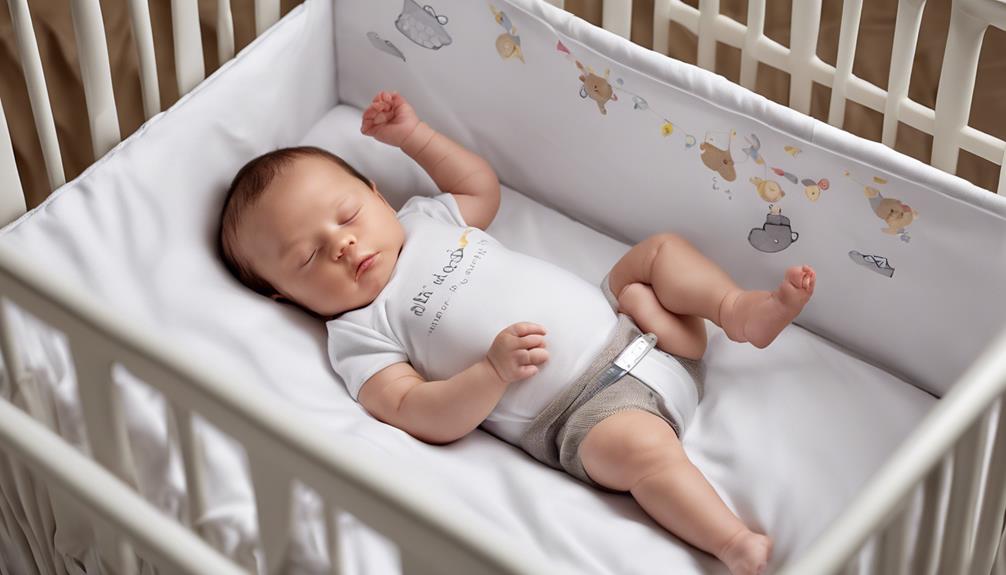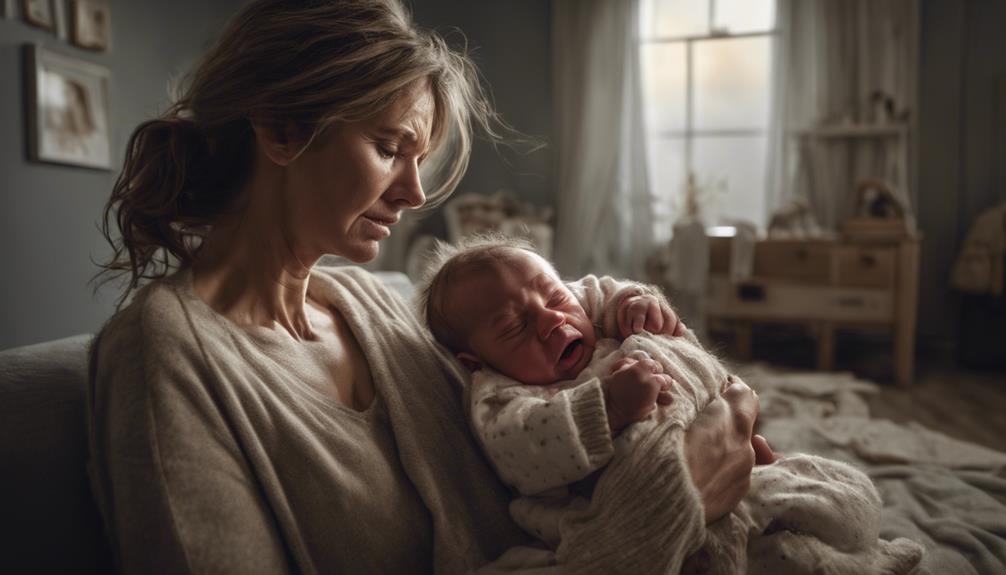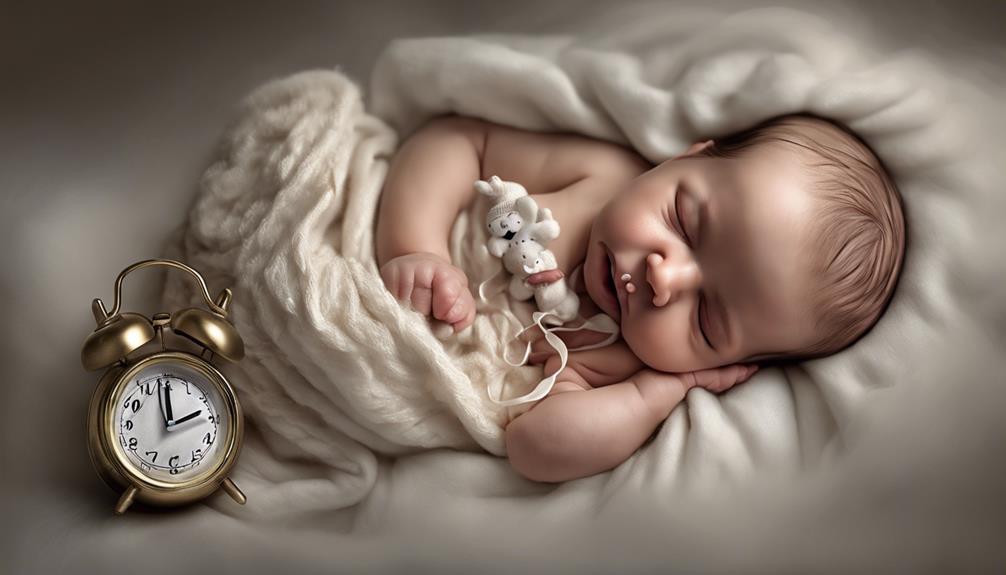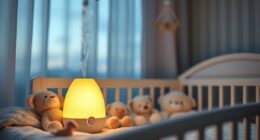As new parents, we all want what’s best for our little ones, and ensuring your newborn’s safe side sleeping may seem like a challenging task, but it doesn’t have to be overwhelming.
By following simple guidelines and implementing practical strategies, you can create a secure sleep environment that promotes your baby's safety and well-being.
Let's explore the benefits of side sleeping, discover the importance of adhering to recommended practices, and learn how to optimize your newborn's sleep space for a peaceful night's rest.
Key Takeaways
- Side sleeping benefits include reducing flat head syndrome and aiding digestion.
- Consult your pediatrician before considering side sleeping for your newborn.
- Always prioritize back sleeping for infants under 1 year for safety.
- Implement AAP guidelines to create a secure sleep environment for your baby.
Importance of Safe Side Sleeping
Understanding the essential importance of safe side sleeping for newborns is critical in ensuring their well-being and safety during sleep. While side sleeping may seem like a cozy position for your baby, it's vital to be aware of the risks associated with it.
Before 4-6 months of age, side sleeping can increase the chances of SIDS and suffocation. This is because babies under 4 months are more likely to accidentally roll onto their stomach while in this position. It's recommended to prioritize back sleeping as the safest option for infants until they reach their first year.
Even though side sleeping can be considered once your baby can roll over independently, always consult with your pediatrician to determine the right time for this change. By understanding the risks and benefits of safe sleep practices, you can create a secure environment for your little one to rest peacefully.
Creating a Secure Sleep Environment
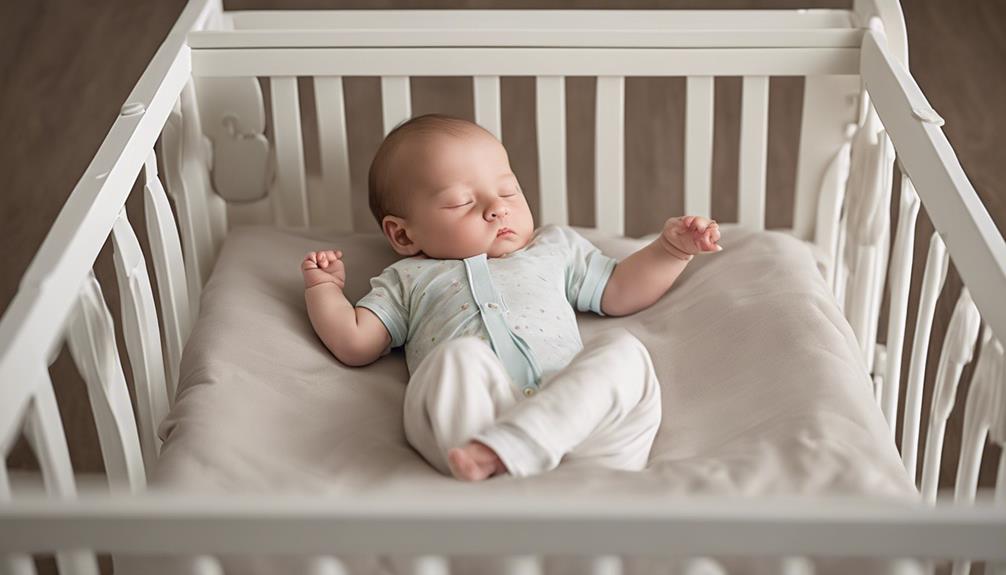
To guarantee your newborn's safety during sleep, establishing a secure sleep environment is paramount. When it comes to side sleeping, here are three essential guidelines to follow:
- Use a firm sleep surface: Opt for a crib mattress or a similar firm surface to provide a safe sleeping area for your newborn. This helps reduce the risk of accidental rolling and provides a stable base for side sleeping.
- Avoid soft bedding: Keep the sleep area free of pillows, blankets, and stuffed animals. These items can pose suffocation hazards during side sleeping and are best left out of the sleep environment to make sure your baby's safety.
- Monitor your baby: It's important to keep an eye on your infant during side sleeping to prevent accidental rolling onto the stomach. Especially in the early months, monitoring your baby can help maintain the proper side sleeping position and reduce the risk of potential hazards.
Benefits of Side Sleeping Position
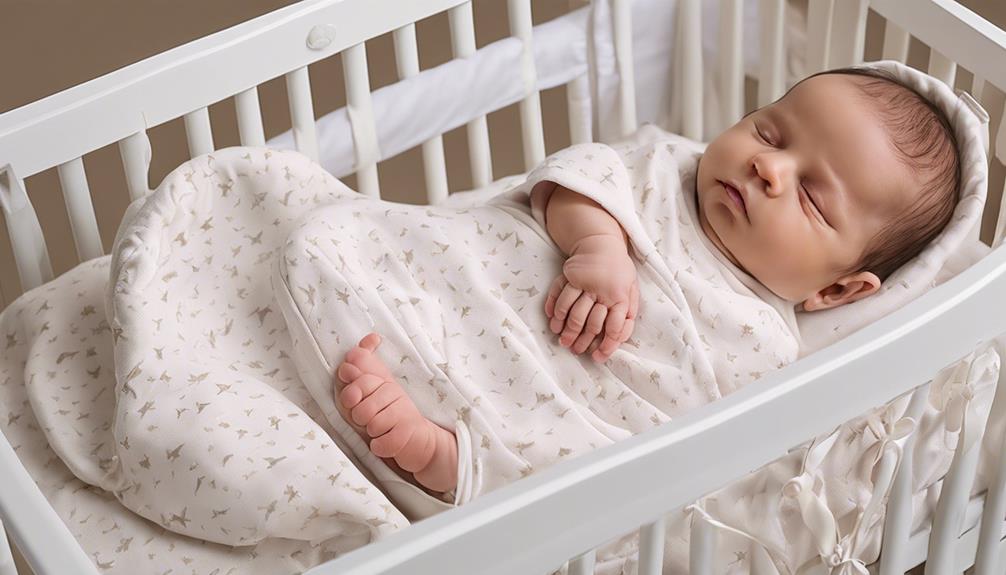
Side sleeping provides numerous benefits for newborns, promoting healthier sleep and potential relief from certain discomforts. This position can reduce the risk of flat head syndrome, a common concern for infants.
By allowing babies to sleep on their sides, it may help alleviate symptoms of gastroesophageal reflux, making feeding and sleeping more comfortable for both baby and parent. Additionally, side sleeping can aid in digestion and reduce colic symptoms by facilitating the passage of gas through the digestive system.
Many newborns find the side sleeping position to be comfortable and soothing, which can contribute to a more sound sleep. Parents often observe that their babies seem more at ease and rest better when placed on their side. Overall, side sleeping offers multiple advantages for newborns, supporting their well-being and promoting a peaceful sleep environment.
Practical Tips for Safe Sleep
As parents, our top priority is ensuring the safety and well-being of our newborns, especially when it comes to their sleep environment. Here are some practical tips to create a safe sleep environment for our babies:
- Back to Sleep: Always place babies on their back for sleep. This is the safest sleep position to prevent SIDS and reduce the risk of suffocation.
- Firm Surface: Make sure that your baby sleeps on a firm and flat surface, such as a crib mattress. Soft bedding or surfaces can increase the risk of suffocation.
- Supervise Sleep: It's important to supervise your baby during sleep to make sure they remain on their back and maintain a safe sleep environment. Avoid using sleep positioners or other devices that claim to keep the baby on their side, as they can pose suffocation hazards.
AAP Recommendations for Newborn Safety

Following the American Academy of Pediatrics (AAP) guidelines, we prioritize the safety of newborns by recommending back sleeping as the best practice for reducing the risk of Sudden Infant Death Syndrome (SIDS). While side sleeping may seem like a comfortable position for newborns, it can pose serious risks. AAP advises against side sleeping due to the potential for accidental rolling onto the stomach, which may obstruct airways and lead to breathing difficulties, suffocation, and even motor skill delays.
It is essential to understand that placing newborns on their backs for sleep is the safest position, as recommended by the AAP. This simple practice can safeguard the risk of SIDS. AAP suggests that back sleeping should continue until the child reaches at least 1 year of age to promote safe sleep practices effectively. By following these recommendations, we can create a secure sleeping environment for newborns and guarantee their well-being throughout their early development.
What Are the Best Practices for Ensuring Safe Side Sleeping for Newborns?
When it comes to safe newborn sleep position tips, it’s important to ensure the baby is placed on their back for naps and nighttime sleep. Keep the crib free of soft bedding and toys to reduce the risk of suffocation. Use a firm mattress and avoid overheating the baby with excessive layers.
Conclusion
Let's wrap up by remembering that safe side sleeping is like a cozy cocoon, protecting our precious newborns from harm.
By following the guidelines and recommendations outlined in this guide, we can provide our little ones with the safest and most secure sleep environment possible.
So let's tuck them in, keep them close, and rest easy knowing we're doing everything we can to keep them safe and sound.
Sweet dreams, little ones.
